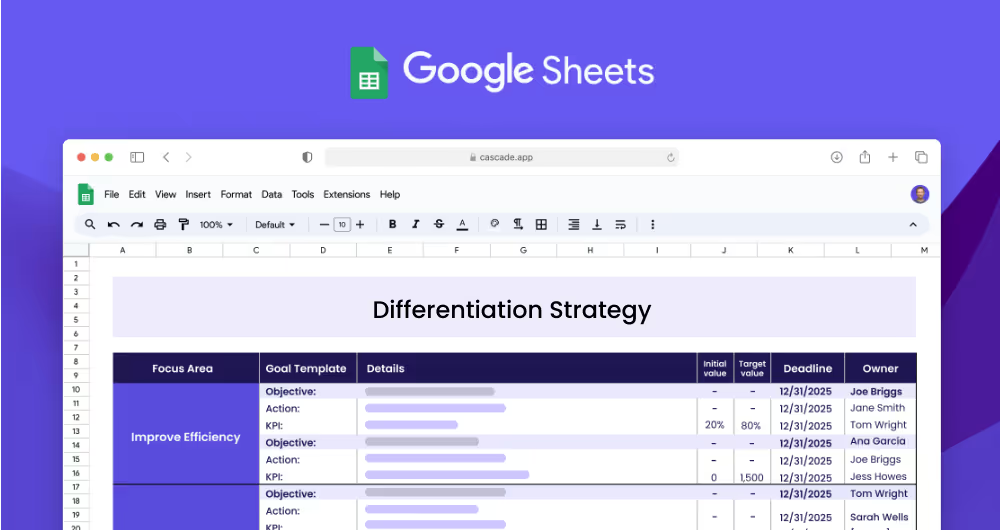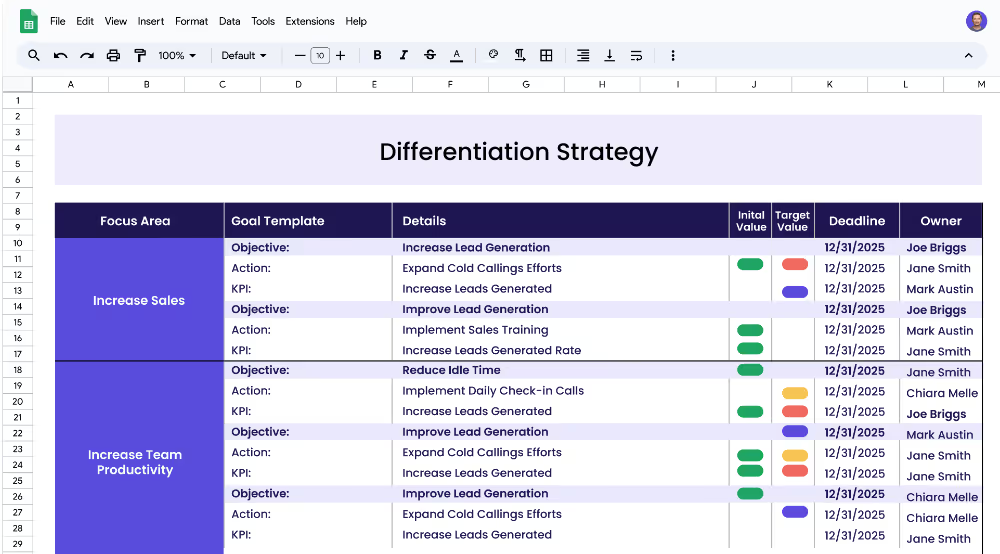A differentiation strategy allows companies to stand out from their competition by creating unique value propositions that can't be matched by their competitors. This involves focusing on differentiating features that make a product or service unique and desirable to customers. Differentiation strategies can be used to create a competitive advantage, build brand loyalty, and increase customer satisfaction.
Each focus area has its own objectives, projects, and KPIs to ensure that the strategy is comprehensive and effective.
This Differentiation Strategy template is designed for companies looking to effectively differentiate their products and services in competitive markets. The template provides an outline of steps and considerations for creating a differentiation strategy, including defining focus areas, setting measurable targets, and implementing projects to achieve the desired results.
The first step in crafting a successful differentiation strategy is to define your focus areas. These are the areas that you want to emphasize in order to create a unique value proposition. Examples of focus areas can include brand building, customer experience, differentiating value proposition, and expansion.
Once you have identified your focus areas, the next step is to identify objectives. Objectives are specific goals that you want to achieve within each focus area. For example, under a brand building focus area, objectives could include increasing brand recognition and loyalty.
In order to effectively track progress, you need to set measurable targets, or KPIs. These are specific metrics that you use to track progress toward achieving objectives. An example of a KPI for the focus area of Differentiating Value Proposition could be: Increase Unique Features from 3 to 5.
Once you have set measurable targets, the next step is to create projects to achieve them. Projects are specific actions that you can take to work towards achieving your objectives. For example, under a brand-building focus area, you could launch an advertising campaign or offer loyalty points.
If you’re ready to accelerate your strategy and see quicker results, Cascade Strategy Execution Software is your next step. Unlike spreadsheets that can bog down your progress, Cascade offers a dynamic platform that enhances real-time updates, centralized collaboration, and automated reporting. This means your team can easily track progress, adjust strategies quickly, and maintain alignment across all levels.Sign-up for free or book a demo with one of our strategy experts to explore how we can help you streamline and succeed.


